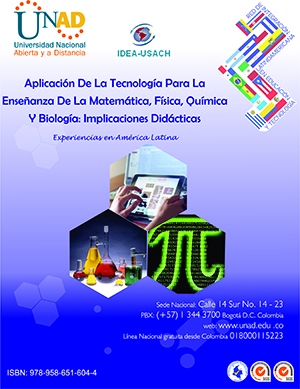Publicado
CONTRIBUIÇÕES DAS TECNOLOGIAS DA INFORMAÇÃO E DA COMUNICAÇÃO EM METODOLOGIAS ALTERNATIVAS PARA O USO DE ANIMAIS NÃO HUMANOS EM AULAS EXPERIMENTAIS DE CIÊNCIAS BIOLÓGICAS
Abstract
The use of animals for the training of students through the execution of experiments and emonstrations is not new. However, this use can report aggravating that may hinder rather than contribute to learning, because many undergraduates do not feel free to use animals in vivo in practical classes. On the other hand, the evolution of the intensive use of Information and Communication Technologies came to question the traditional teaching paradigms. The alternative methods come to comply with ethical, moral or religious principles of these undergraduates who oppose such use. The teachers need to have an ethical position regarding to the use of non-human animals in vivo in practical classes, because their role is to guide the student in the question of the man in relation to other animals, showing the value of life in any circumstances, whether human or not, just as well to present the legal issues involved in this context. From the results of a survey, it was drawn up this present proposal for alternative methodologies to the use of non-human in vivo animals in practical classes. These metododologies, such as the case of the use of softwares, can generate the same knowledge about the subject to be studied.
Key-words: Information and communication technology in education. Ethics in research. Science Teaching. Education in Health. Animal experimentation. Resumen
El uso de animales para la capacitación de estudiantes a través de la realización de experimentos y demostraciones no es reciente. Sin embargo, ese uso podrá presentar agravantes que dificultarían, en lugar de contribuir al aprendizaje, pues muchos estudiantes no se sienten a gusto para utilizar animales in vivo en clases prácticas. Por otro lado, la evolución de la utilización intensiva de Tecnologías de la Información y de la Comunicación vino a cuestionar los paradigmas de enseñanza tradicional. Los métodos alternativos llegan para respetar los principios éticos, morales o religiosos de esos aprendientes que se oponen a dicho uso. Los profesores necesitan presentar una postura ética en lo que atañe a la utilización de animales no humanos in vivo, pues su papel es orientar al alumno en la cuestión del hombre con relación a los otros animales, evidenciando el valor de la vida en cualquier circunstancia, sea humana o no humana, y asimismo presentar las cuestiones legales involucradas. Desde resultados de una investigación, se ha elaborado la presente propuesta de metodologías alternativas al uso de animales no humanos in vivo. Esas metodologías, como es el caso del uso de softwares, podrán generar el mismo conocimiento sobre el asunto a ser estudiado.
Palabras-clave: Tecnologías de la información y de la comunicación en la educación. Ética en la investigación. Enseñanza de Ciencias. Enseñanza en Salud. Experimentación animal.
Artículos más leídos del mismo autor/a
- Neusa Maria John Scheid, Gracieli Dall Ostro Persic, OS RECURSOS DA WEB 2.0 NA EDUCAÇÃO CIENTÍFICA ESCOLAR FUNDAMENTADA EM INQUIRY , Libros Universidad Nacional Abierta y a Distancia: 2016: Aplicación de la Tecnología para la enseñanza de la matemática, Fisica, Química y Biología: Implementaciones Didácticas



